Za'atar seasoning (aka zaatar, or za aatar seasoning) is a fragrant Middle Eastern spice blend used to add extra flavor to a variety of foods from vegetables, creamy hummus and labneh, to grilled meats such as chicken, beef or lamb. My zaatar recipe features dried thyme, sumac, toasted sesame seeds, oregano and marjoram. This wonderful blend of spices offers savory, bright and herby notes when sprinkled over your favorite dishes!
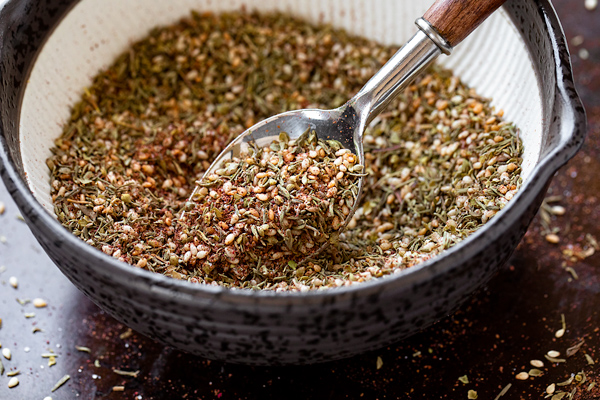
The Fragrant Middle Eastern Spice Blend To Add To Your Favorite Savory Dishes
Popular throughout the Middle East, zaatar is a deliciously flavorful blend of spices and herbs used to liven up many foods from cool, creamy hummus dip and labneh (a thick yogurt “cheese”), to staples such as grilled meats and vegetables.
This savory spice mix even makes for an extraordinarily tasty topping when sprinkled over fresh, soft pita bread drizzled with olive oil, then toasted—one of my favorite ways to enjoy it! It's amazing sprinkled over homemade Hummus Dip as well!
Zaatar is one of those staples that seems difficult to pinpoint an exact recipe for, because each region has its own twist or version of this delicious spice blend, going a bit heavier on certain herbs or spices over others, or even adding in citrusy notes such as dried orange peel or spicy pepper flakes.
I've found that while various ingredients of one's personal liking can certainly be added into a zaatar recipe, there are a small handful of specific ingredients that are part of the basic version, including dried thyme, sumac, toasted sesame seeds, oregano and marjoram.
Ground cumin and coriander are also popular additions to the traditional zaatar (again, depending on the region). But for my recipe here, I stick to the basics and blend those with a bit of sea salt to create a balance of savory, tangy, floral and nutty notes.
Zaatar is a really unique and delicious spice mixture to keep on hand to sprinkle over so many different foods when a bit of extra flavor with a Middle Eastern flare is what you crave.
I love having my own homemade version of zaatar on hand to keep on the table, and find myself adding it to so very many dishes to liven things up a little!
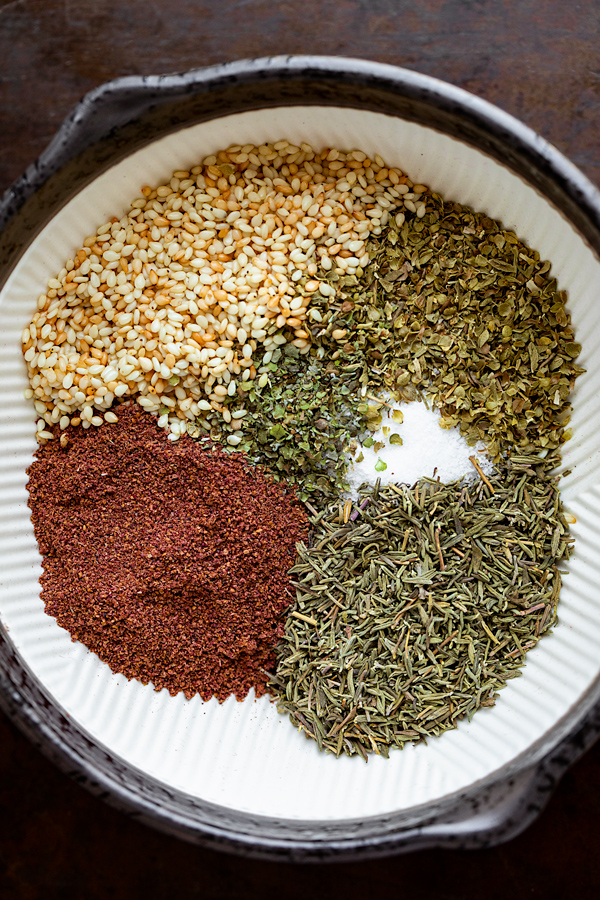
How To Make Za'atar Seasoning
Because zaatar is prepared from dried herbs (sometimes fresh) and is simply a flavorful spice blend that can be kept table side to sprinkle over foods as desired, there's no cooking required, only a bit of mixing.
Since toasted sesame seeds are a part of the recipe, do use those if you can find then. Otherwise, you may need to quickly toast the sesame seeds in a small pan just until golden before mixing them together with the rest of the ingredients.
Because dried wild thyme is used in many traditional recipes, I like to use that as a base for my own zaatar recipe. French thyme is a good substitute, because it is very fragrant, but feel free to use any regular dried thyme.
For my recipe, I like to go a bit heavy on the sumac, which is tangy, dried berry with a lovely reddish-orange color and rich in Vitamin C. I love the flavor of it, and find that it lends lots of brightness to the zaatar, which I personally really like.
I also like lots of those toasted sesame seeds, followed by the thyme, the oregano, and the pinch of marjoram.
If you wanted to make the za'atar seasoning into more of a paste, you could also mix in a small amount of olive oil. But for this version here, I like to keep the mixture dry for convenient keeping.
Here's a sneak peek at my zaatar recipe: (or just jump to the full recipe...)
- If using untoasted sesame seeds, I add those to a dry pan and toast them on medium-high heat, just until golden, about 30 seconds to 1 minute; then, I set them aside on some paper towel to cool.
- To prepare my zaatar, I use my mortar and pestle to crush the dried herbs a bit (optional), then add in my sesame seeds and sumac, and mix to blend with a spoon.
- I like to store the za'atar seasoning in a small glass spice jar with a tight fitting lid, for up to 6 months.
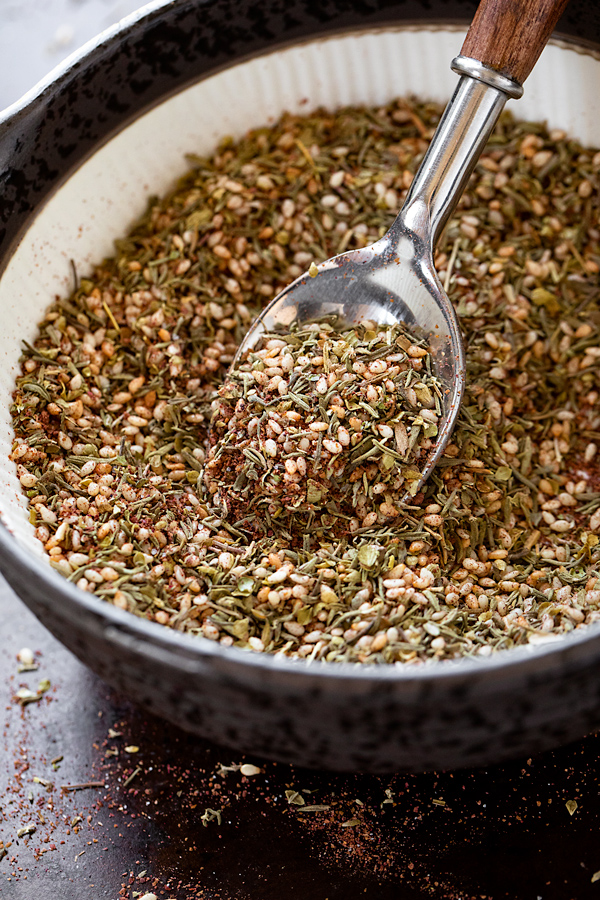
Recipe
Za'atar Seasoning
by Ingrid Beer

Category: Condiment
Cuisine: Middle Eastern
Yield: ½ cup
Nutrition Info: 5 calories (per teaspoon)
Prep Time: 10 minutes
Cook time: 1 minutes
Total time: 11 minutes
Ingredients:
- 2 tablespoons sesame seeds
- 2 tablespoons dried thyme
- 1 tablespoon dried oregano
- ¼ teaspoon dried marjoram
- ¼ teaspoon (heaping) sea salt
- 2 tablespoons sumac
- To toast your sesame seeds, place a small skillet over medium-high heat, and add the sesame seeds; stir the seeds in the hot pan for about 1 minute, or just until they begin to become golden brown and slightly aromatic; spoon onto paper towel to set aside and cool.
- Add your dried thyme, oregano, marjoram and sea salt to a mortar (you can even use a spice grinder and pulse the mixture a bit), and using a pestle, grind the dried herbs for a few moments to make them into a smoother, finer texture for your zaatar.
- Next, add in the sesame seeds and sumac, and give the mixture one more little pass with the pestle, mainly to just blend the ingredients rather than crush the sesame seeds. (You can skip this step altogether and keep things “whole”.)
- Pour the za'atar seasoning mixture into an air-tight jar and keep for up to 6 months, using it to season as you wish. You can also add a bit of olive oil to make it into a paste, or more spreadable.
Tips & Tidbits for my Za'atar Seasoning:
- Use a mortar and pestle for finer texture: For my zaatar, I like to gently crush the sesame seeds as well as the other ingredients using a mortar and pestle for a slightly finer texture, but this is not necessary. You can leave the ingredients as they are, more “whole”, or even give them a quick pulse in a small food processor or spice grinder.
- Toast your sesame seeds, if raw: If you can find toasted sesame seeds, opt for those. Otherwise, simply toast regular sesame seeds in a dry skillet for about 30 seconds to 1 minute, just until golden-brown.
- Add some spicy kick: You can add a small sprinkle of red pepper flakes into the mix if you'd like some added heat.
- Other warming spices for additional flavor: A small amount of ground cumin and coriander sprinkled into the mix will add a distinctly warm note to the za'atar seasoning, so feel free to add a pinch according to your taste.
- Olive oil to create a zaatar paste: You can add a small amount of olive oil to the dry mixture to create a paste-like consistency if you'd like to spread it over chicken or other meats, or over top of warm pita bread.
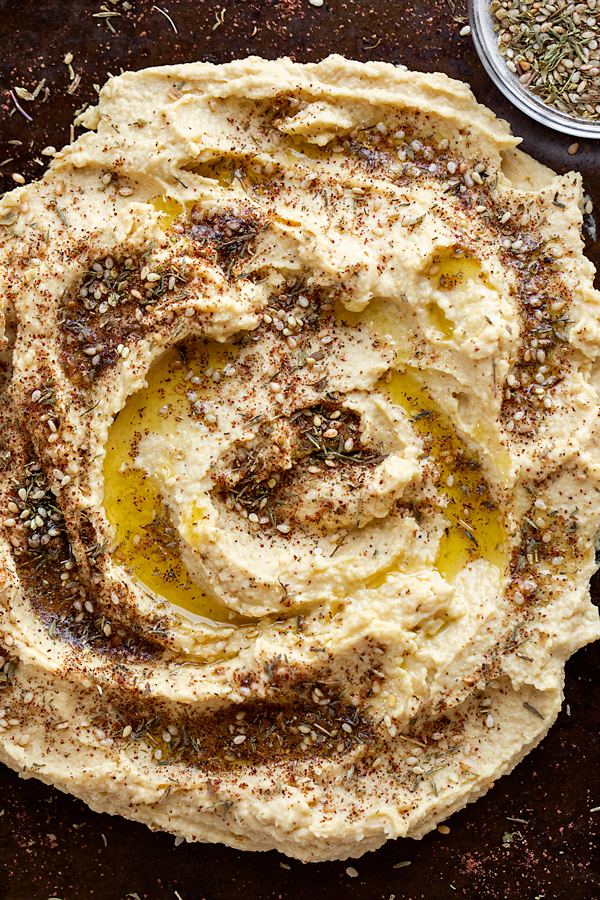
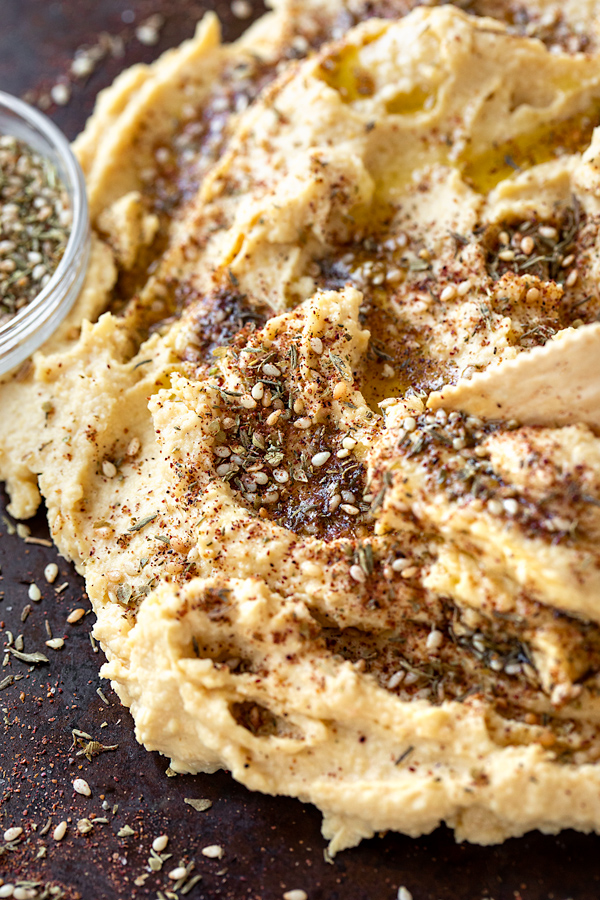
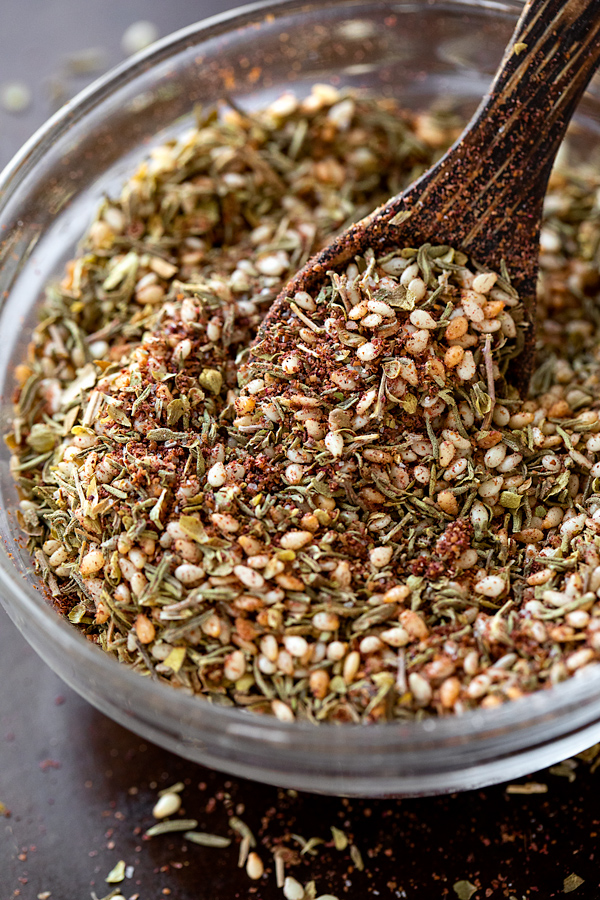
Looking for some tasty recipes to use za'atar in? Check out this Hummus Dip, this Warm Eggplant Dip, these Steak Kabobs, or these Chicken Kebabs!



Kim
I've been enjoying your recipes. I made the chicken stroganoff last week. It was such a nice dish. This spice blend looks interesting. I've never seen sumac before. Is it something that is readily available?
The Cozy Apron
Hi Kim,
I’m so glad that you’ve been enjoying the recipes!
Yes, the sumac should be readily available. I purchased mine at my local Whole Foods Market, and I know you can find it on Amazon as well.
Hope you continue to have fun with the recipes!